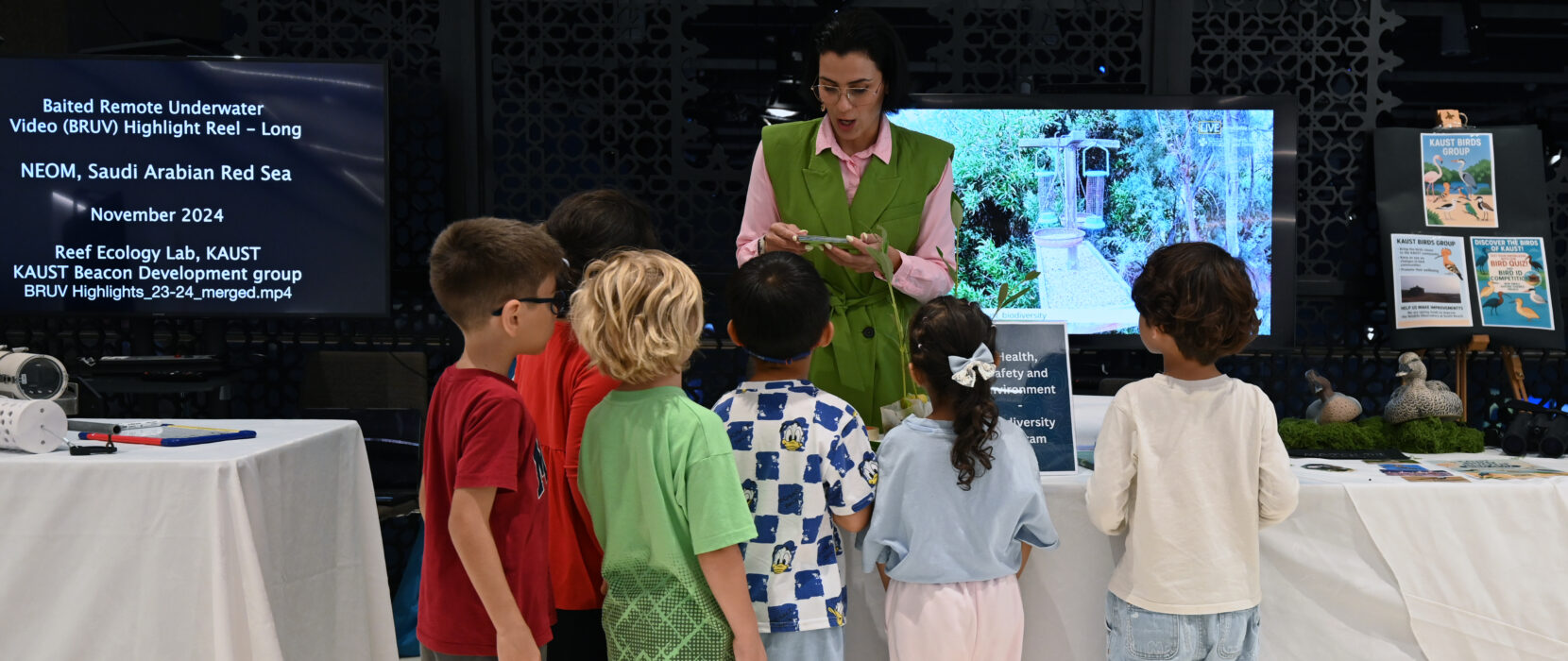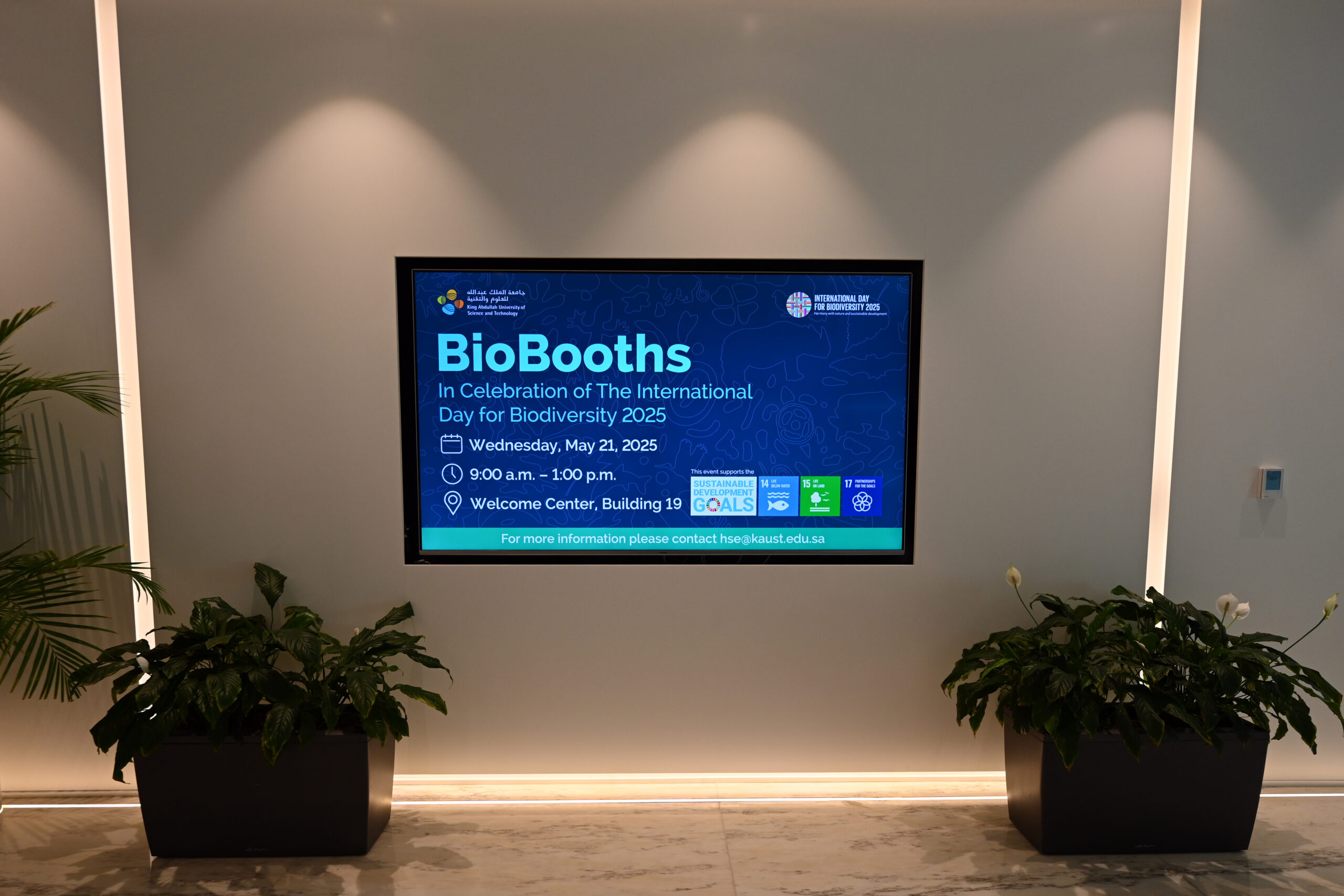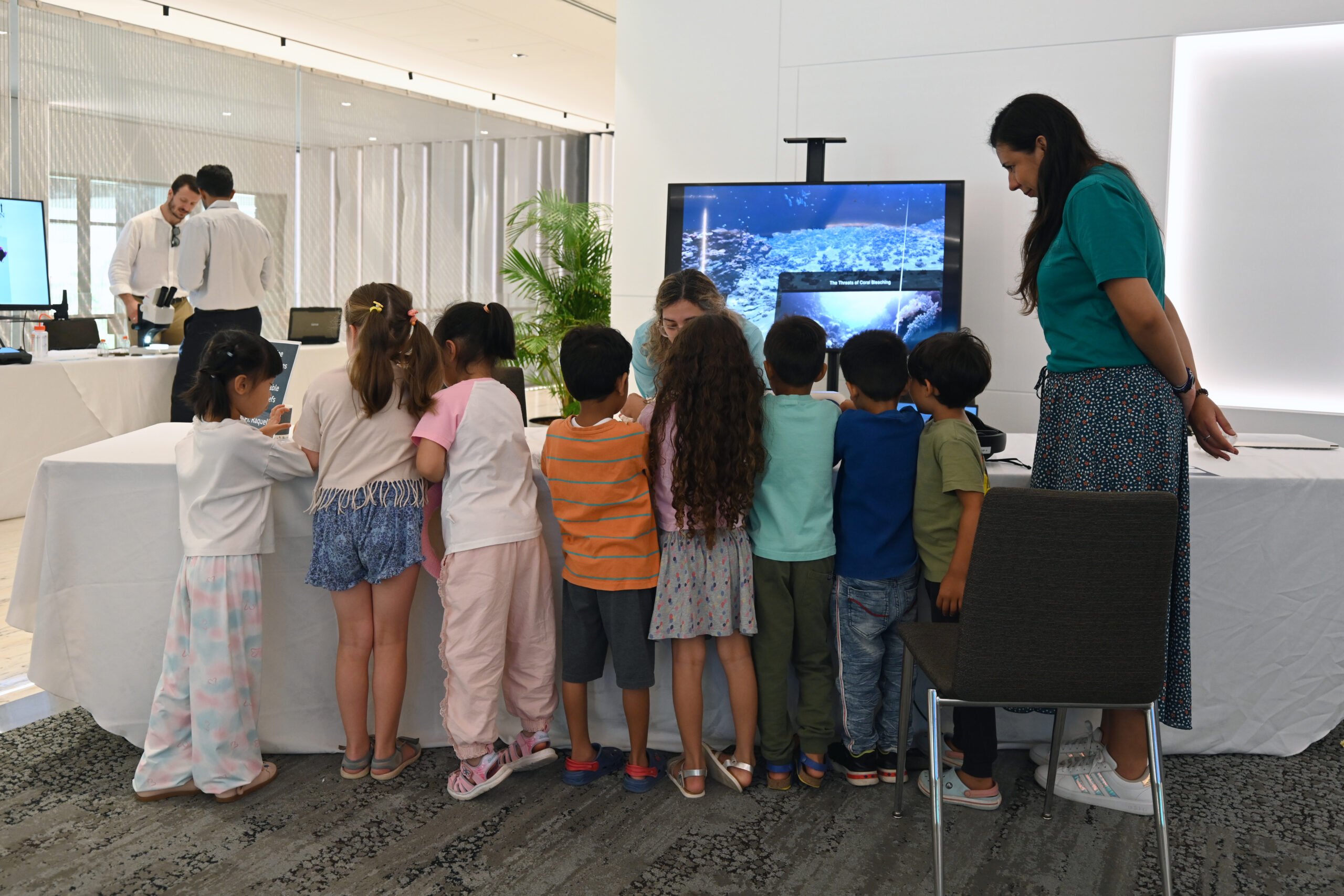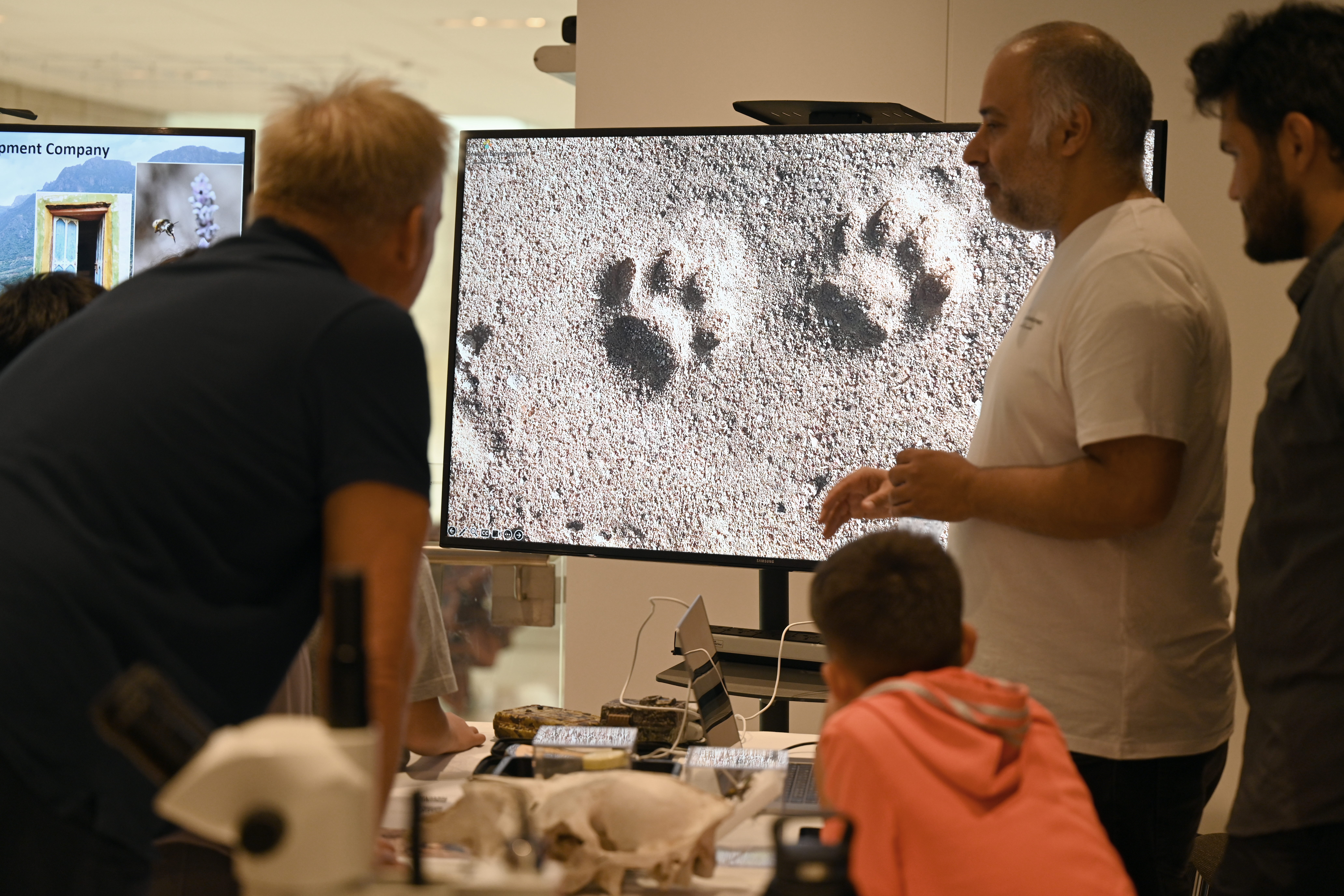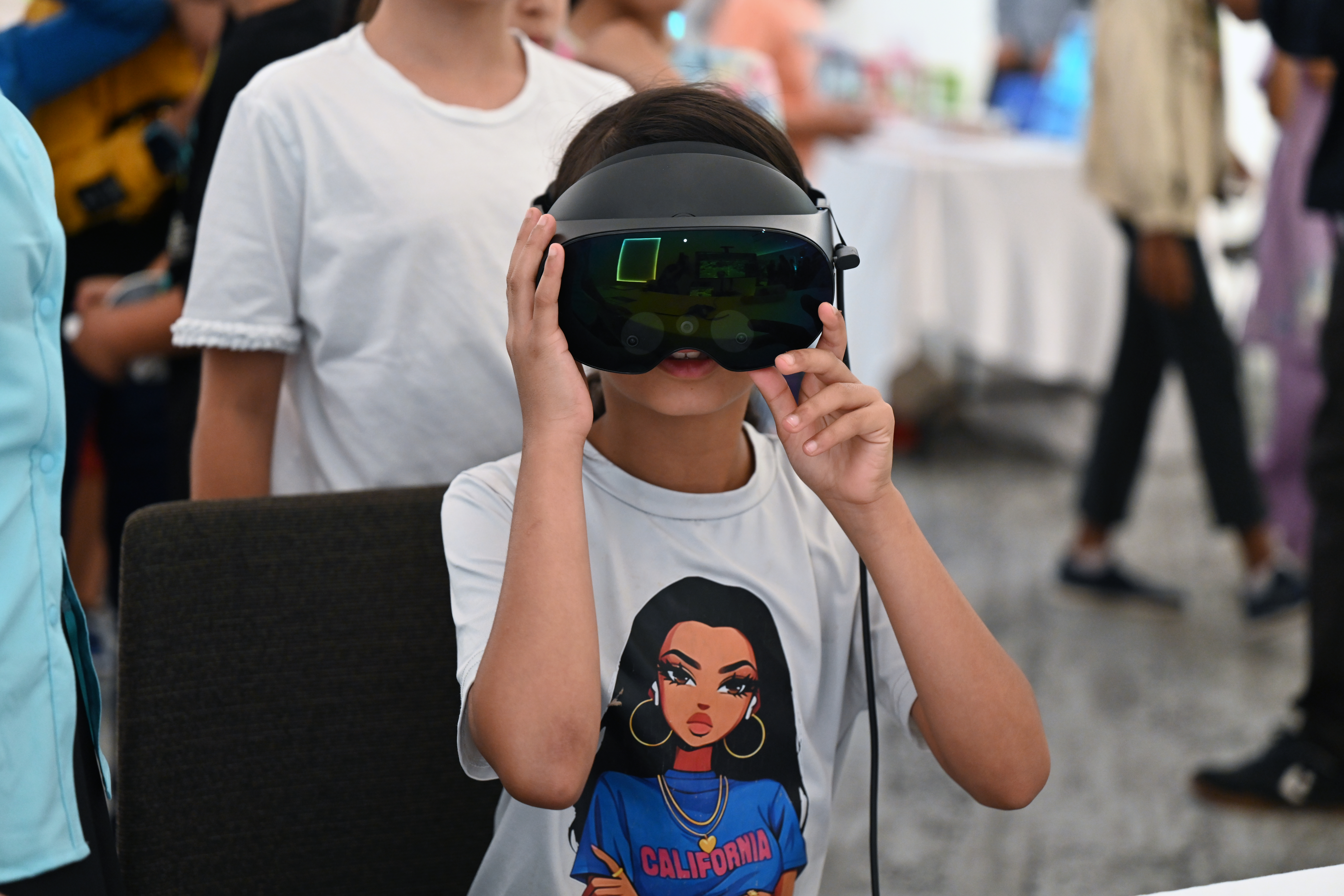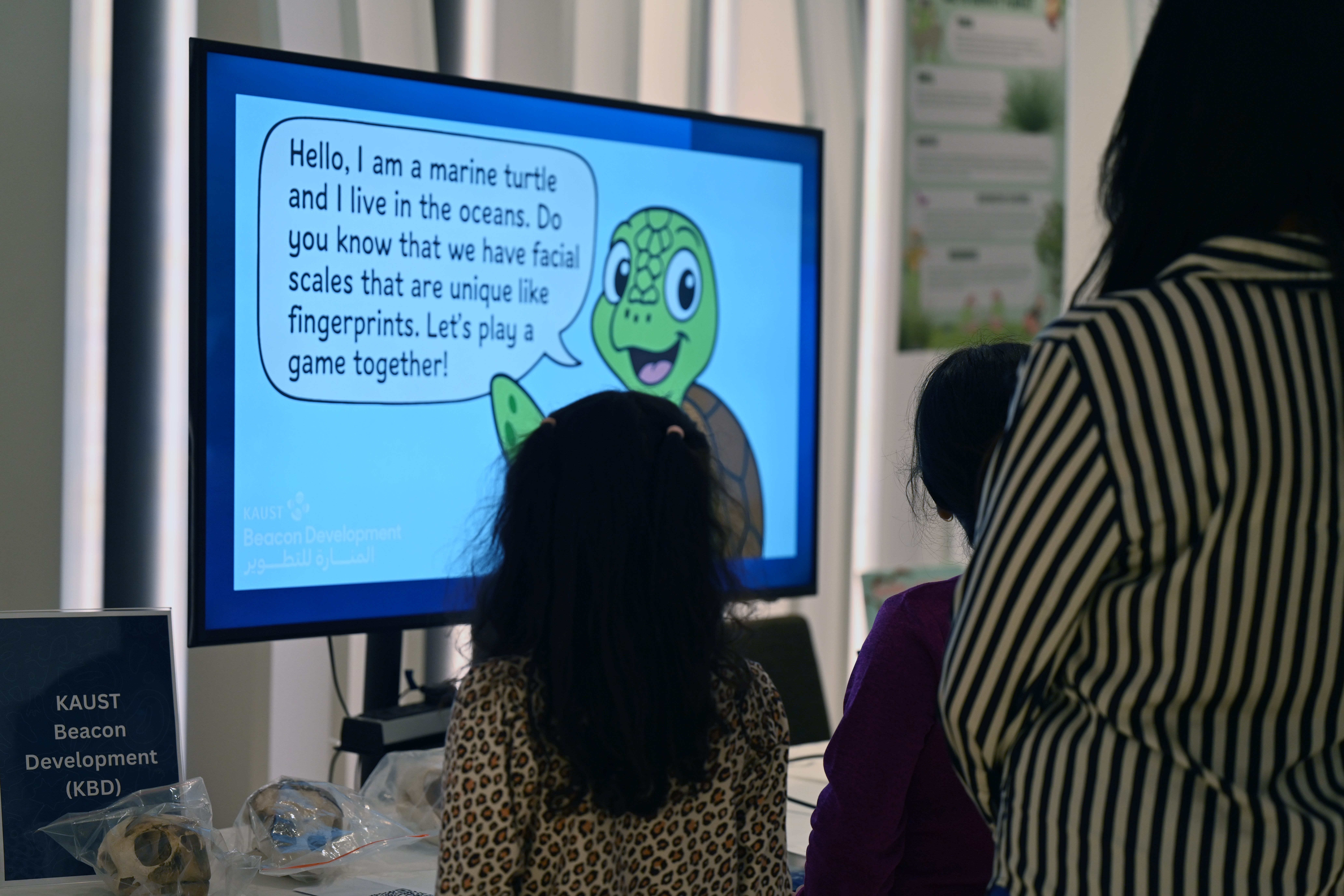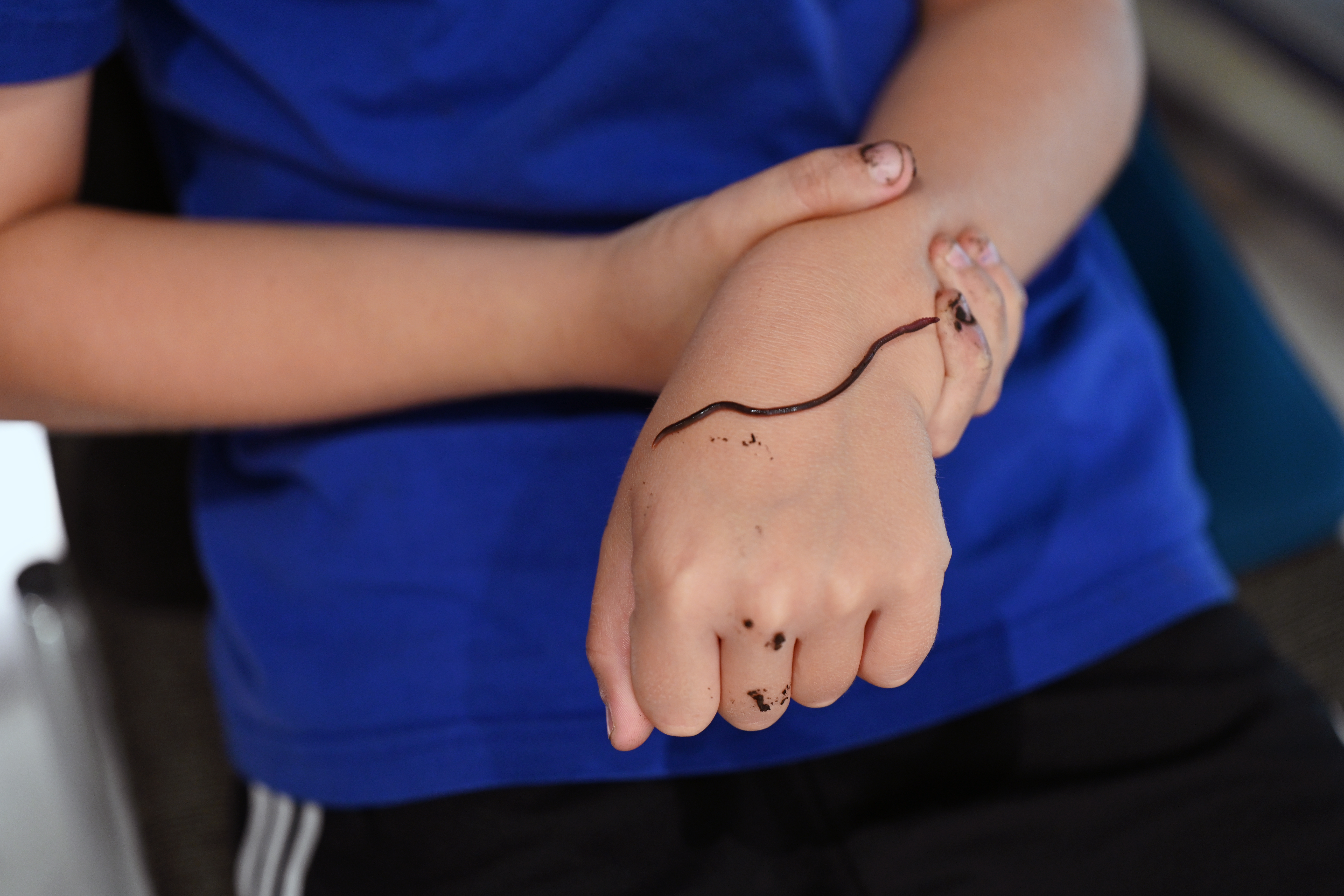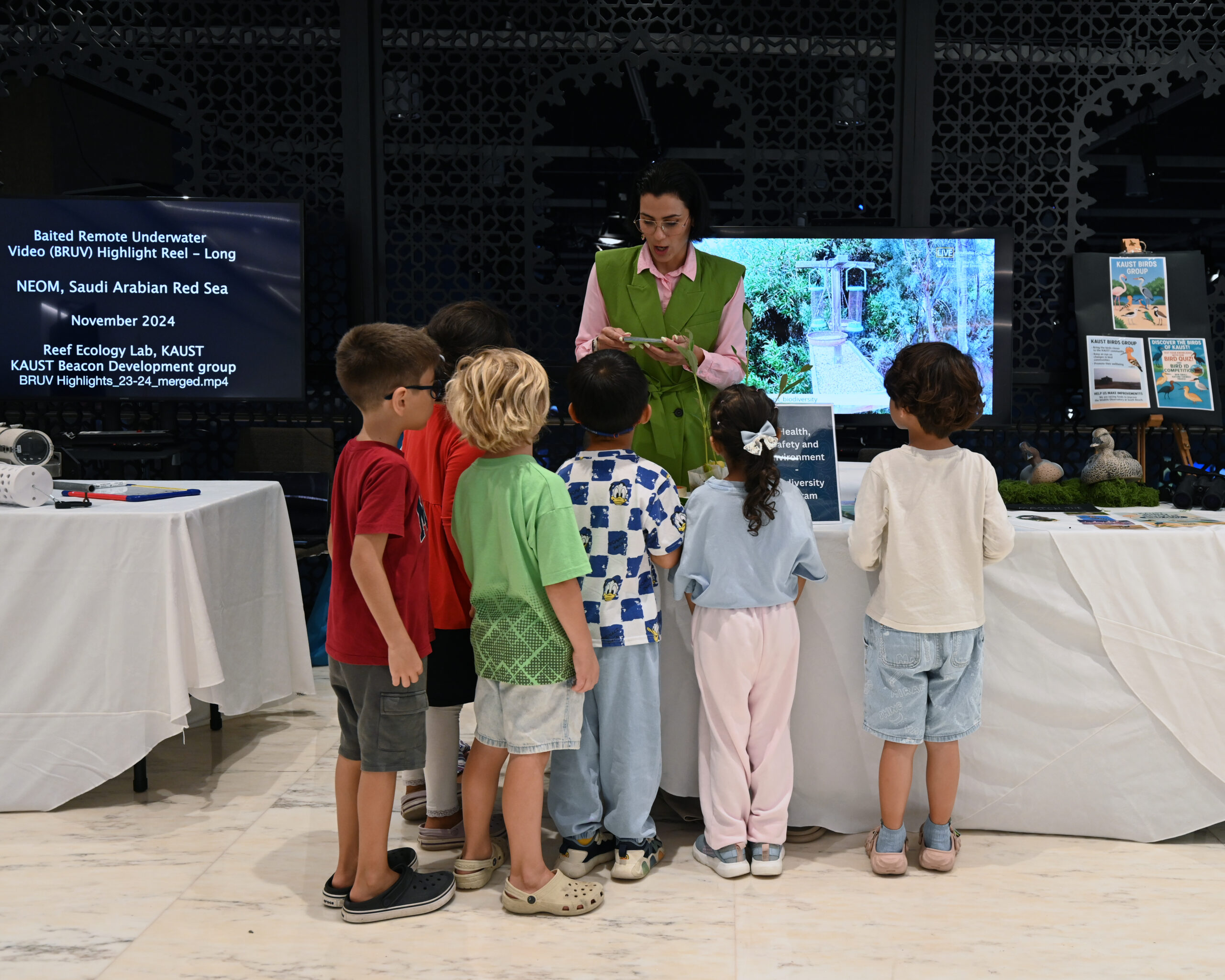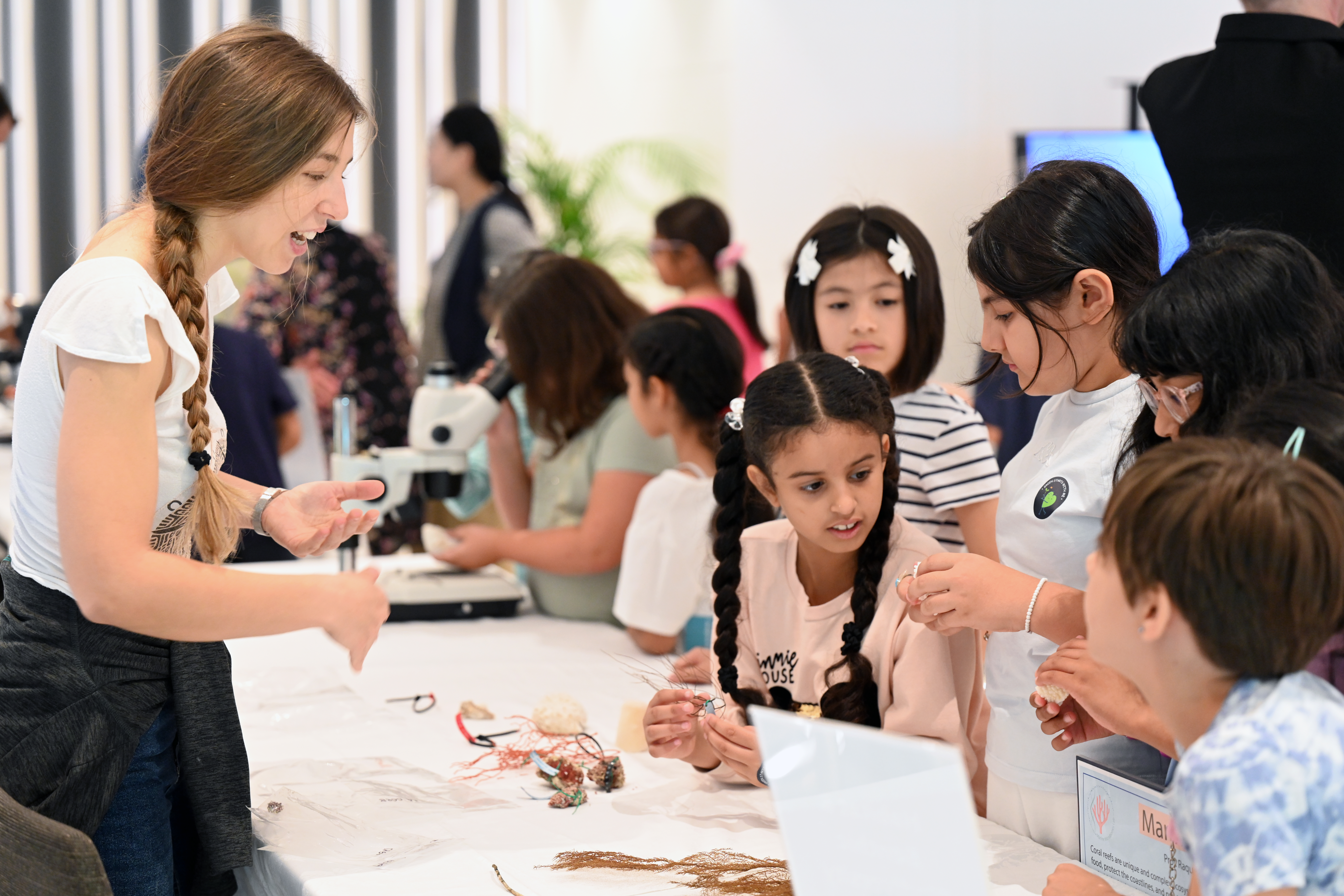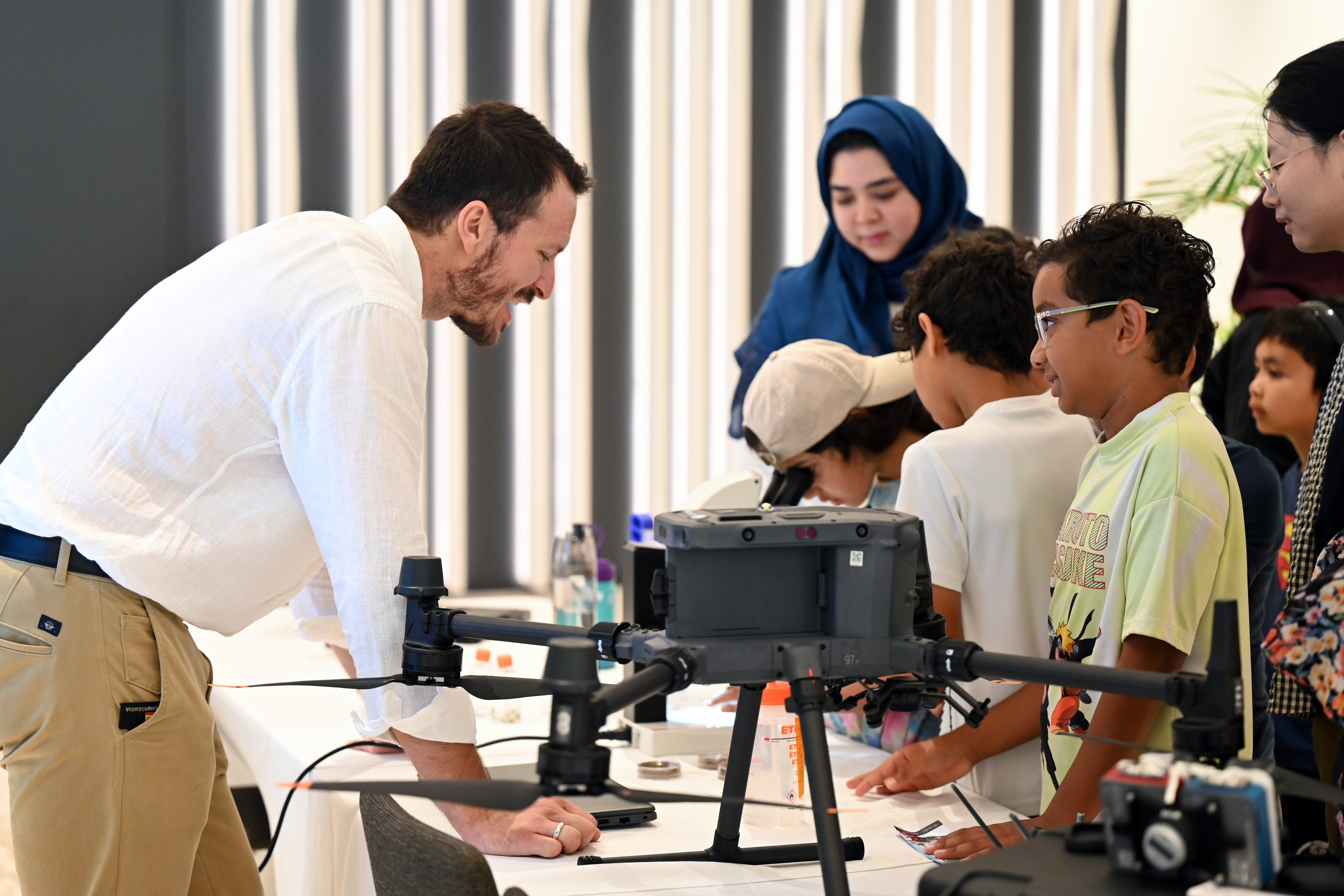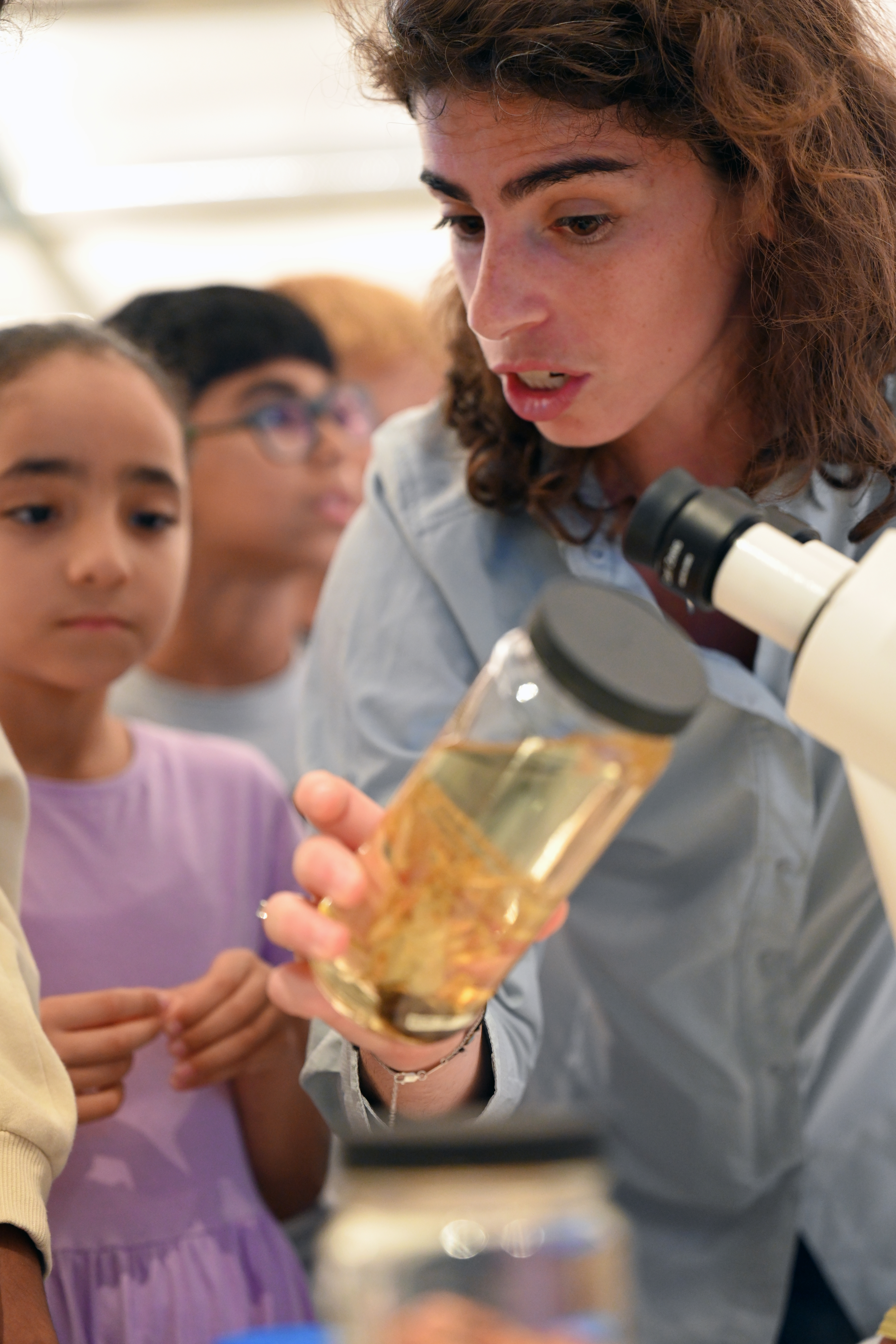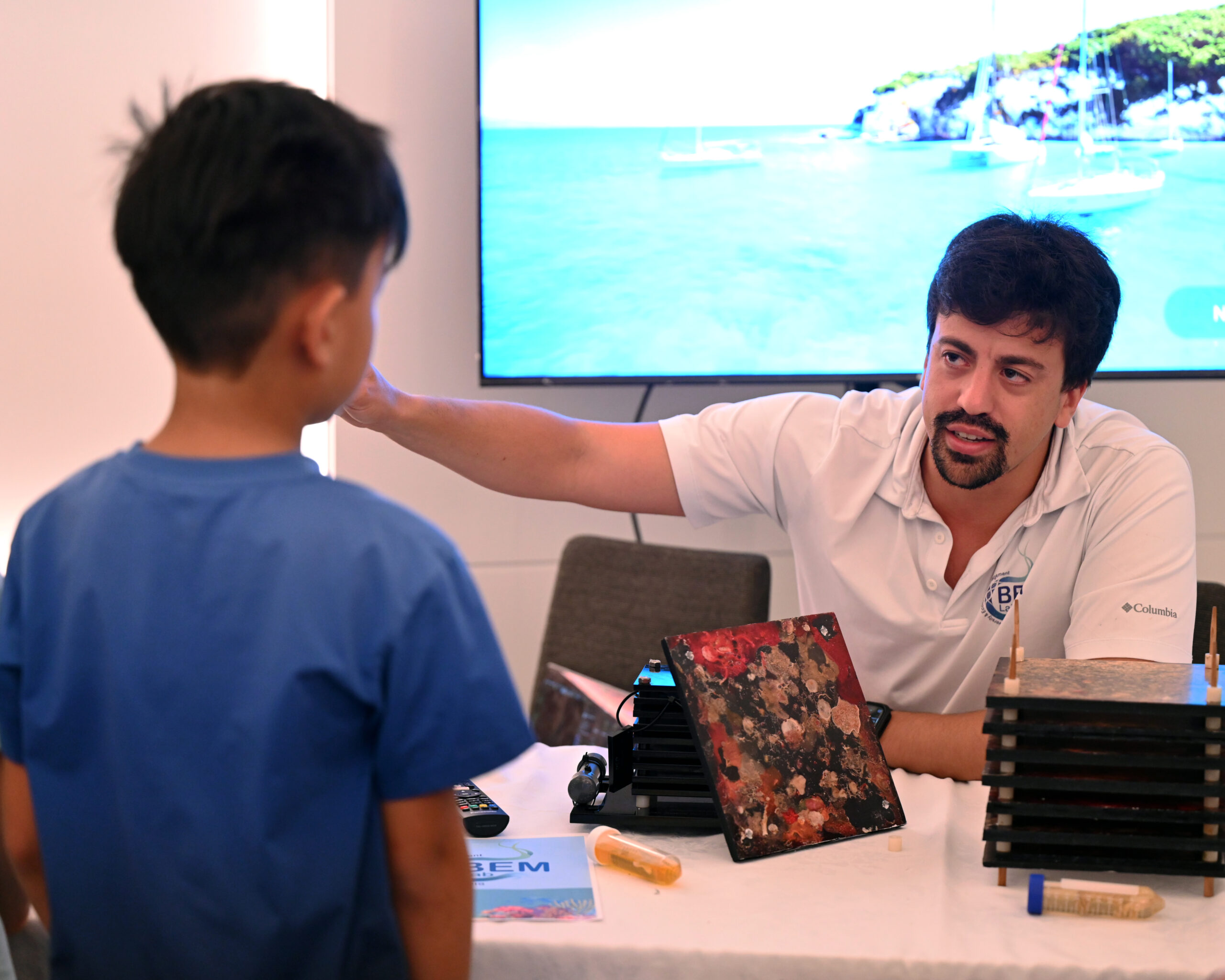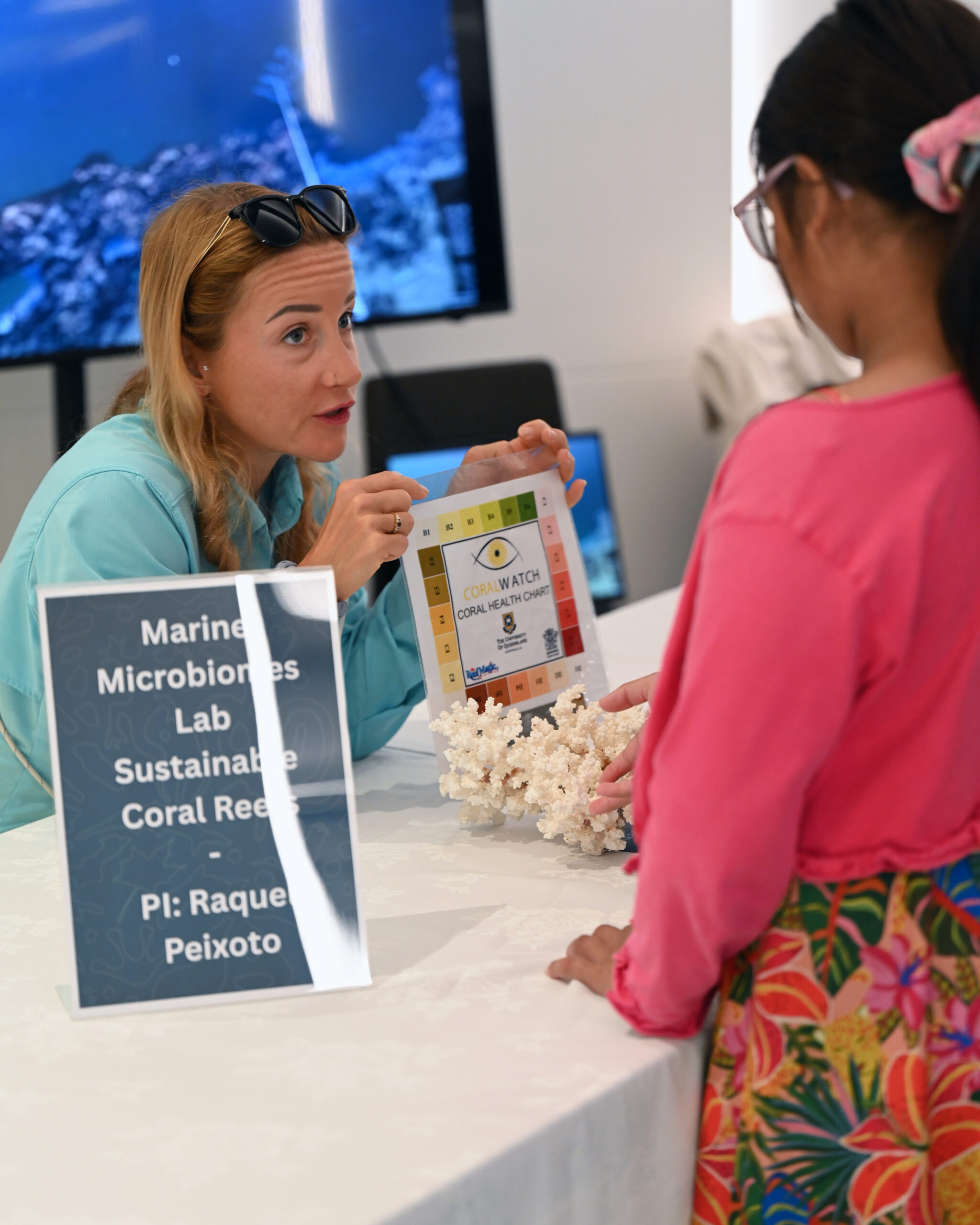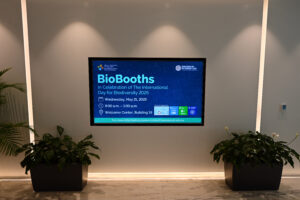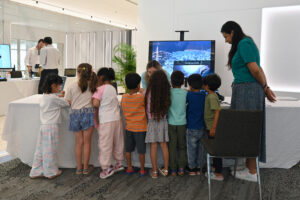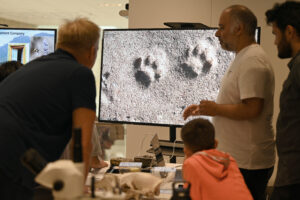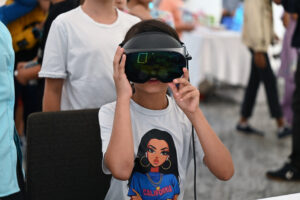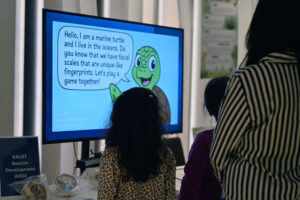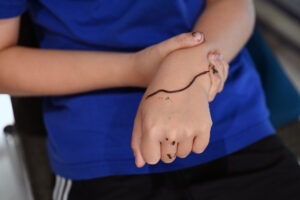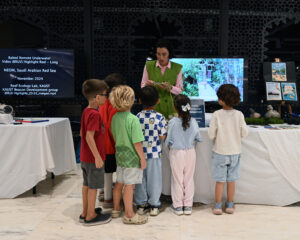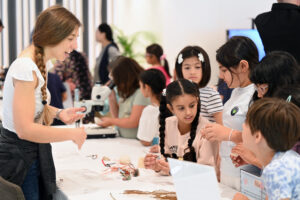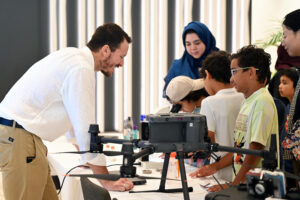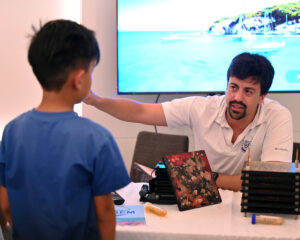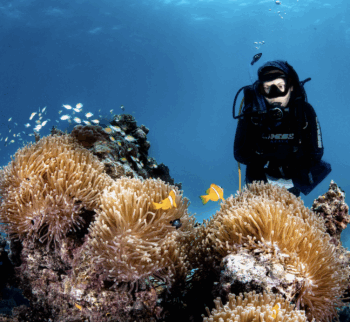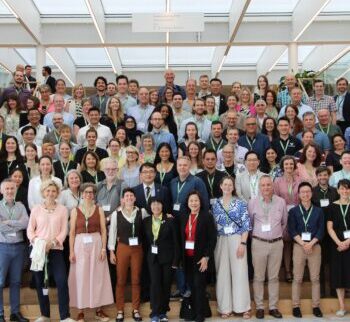On May 21, KAUST hosted the first edition of BioBooths 2025, a vibrant, hands-on event marking the International Day for Biological Diversity. Organized by the Health, Safety, and Environment (HSE) Department as a public-facing open day grounded in research and learning, the showcase brought together KAUST research labs, startups, and departments to engage the community in exploring the diversity of life on Earth—and our shared responsibility to protect it.
Held under the 2025 global theme “Harmony with Nature and Sustainable Development”, the event drew over 650 participants and attendees, including students from The KAUST School (TKS), university staff, students and researchers, and visiting families from Jeddah. Throughout the day, the venue provided multiple activities, reflecting KAUST’s commitment to educational programs for both local and national communities. From freshwater ecosystems to land and ocean sustainability, participants of all ages learned about real-world science, practical conservation tools, and the impacts of human activity on biodiversity.
At the KAUST Beacon Development (KBD) booths, visitors explored Saudi Arabia’s native fauna through wildlife skulls, bone samples, camera trap footage, and bat acoustic recordings. These displays emphasized the importance of understanding local species and habitats to ensure the sustainable management of shared land ecosystems, while also illustrating how conservation research benefits from collaboration with the local community.
KBD also led a fisheries-focused booth where participants learned how otoliths (fish ear bones) are used to study fish populations and age structures — critical tools for tracking overfishing and informing policy. This practical demonstration also helped participants connect the science behind fisheries management with efforts to prevent illegal or unregulated fishing, ultimately contributing to more sustainable fishing practices.
Turtle conservation was another highlight from KBD, providing an opportunity for the community to learn about how marine turtles can be identified and tracked, with the goal of understanding their distribution and behavior for enhanced aquatic stewardship and promoting the conservation of their ocean habitat.
Nearby, the Dryland Ecology and Global Change Lab booth demonstrated how drones and remote sensing tools are used to study biodiversity in extreme environments. Through hands-on interactions with equipment and collected samples, participants learned how scientists monitor desert ecosystems to understand ecosystem resilience and promote land stewardship.
The startup Growbiom introduced the unseen world of soil microorganisms, showing how microbial biodiversity contributes to healthier crops and more sustainable agriculture. Their booth reinforced the link between microscopic ecosystems sustainable land use, and food security.
The Marine Microbiomes Lab booth offered a virtual reality (VR) dive into the Red Sea, immersing visitors in the complex world of coral reefs. Alongside the virtual experience, the booth displayed skeletons of real coral colonies and explained the science behind coral bleaching. Visitors learned how bleaching affects not only corals but also the diverse marine species that depend on coral habitats, demonstrating why these changes impact ocean biodiversity as a whole. The booth also showcased researchers’ work on microbial treatments to help corals adapt to environmental stress, and demonstrated how monitoring these adaptations guides efforts to protect and restore reef ecosystems, which also have an important role in sustaining communities that rely on reefs for food and livelihoods. Altogether, the booth emphasized how research can support the sustainable use of oceans and strengthens climate resilience through biodiversity conservation.
The Reef Ecology Lab booth focused on non-invasive monitoring of marine life using Baited Remote Underwater Video Systems, allowing visitors to see how technology helps scientists study fish behavior without disrupting habitats. The presenting researchers underscored how data from these systems informs coastal ecosystem conservation.
On another conservation angle, the Biodiversity & Ecosystem Management Lab highlighted cryptic biodiversity — small, often overlooked marine species that play key roles in ecological health. At their booth, visitors learned how scientists use Autonomous Reef Monitoring Structures (ARMs) to study benthic and cryptic organisms that live within and around coral reef structures. These long-term monitoring tools help researchers assess changes in species composition over time, providing valuable data for evaluating ecosystem health. These organisms can serve as indicators for environmental change and are critical when establishing marine protected areas or assessing the ecological impact of coastal development and tourism. The booth helped connect biodiversity monitoring with the larger goals of sustainable ocean management and evidence-based conservation planning.
As an example of community-led conservation, The KAUST School presented their collaborative work on the university’s first school-based mangrove nursery. Visitors learned how mangroves support biodiversity, stabilize shorelines, and act as natural carbon sinks. This initiative not only promotes restoration of coastal habitats but also strengthens community involvement in aquatic stewardship. Alongside, HSE booth showcased the importance of pollinators and native plants, drawing attention to how local flora contributes to food systems, ecological balance, and sustainable land practices.
Finally, the KAUST Bird Group shared the diversity of local bird species observed on campus and surrounding areas. By sharing identification guides, interactive displays of birdwatching hotspots at KAUST, and examples of how manmade features — such as the golf course and freshwater lake — create essential habitat for resident and migratory species, the group highlighted how this type of infrastructure can benefit both people and wildlife.
The event counted with the visit of KAUST Chairman, His Royal Highness Prince Abdulaziz bin Salman bin Abdulaziz Al Saud, alongside KAUST President Professor Sir Edward Byrne AC, adding national visibility and significance to the event. Their visit signaled strong support for public engagement and science outreach, and reinforced KAUST’s role in shaping a more informed and environmentally responsible society.
Plans are already underway for BioBooths 2026, with a focus on expanding participation and deepening impact. By connecting people of all ages to the science of biodiversity, KAUST continues to grow its role as a hub for education, innovation, and conservation, supporting global sustainable development goals such as SDG 14 – Life Below Water and SDG 15 – Life on Land.

